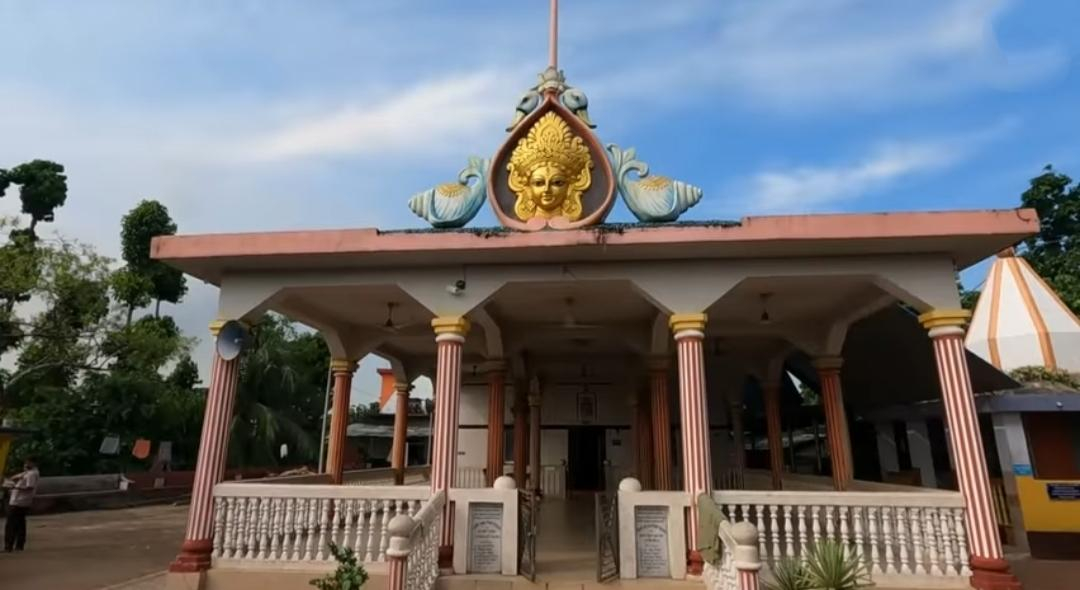Published: 05:18 PM, 29 September 2025
Medhas Muni’s Ashram: In Search of the Original Birthplace of Durga Puja

Sangram Datta
In the heart of Bengal, in the Karaldenga Hills of Chattogram in Bangladesh, lies a forgotten yet glorious history. This history is not merely a religious tale; it is the very center of early Shakti worship in Bengali culture—Medhas Muni’s Ashram. Thousands of years ago, Durga Puja began here, which has today become one of the world’s largest festivals. Yet this sacred site now suffers from encroachment, neglect, and near-oblivion.
The Ashram Where the Goddess First Appeared:
According to legend, Shri Shri Chanditirtha on the peak of Karaldenga Hill in Boalkhali Upazila of Chattogram is the sacred place where Durga Puja was first performed on earth. A great sage named Medhas established a hermitage deep in the forest, devoted to meditation. By his guidance, the dethroned King Suratha and the betrayed merchant Samadhi were inspired to worship the Goddess.
Following Medhas Rishi’s advice, they created the first clay idol of ten-armed Durga and performed the worship during the month of Chaitra. By the Goddess’s grace, King Suratha regained his kingdom, while Samadhi recovered familial love and respect. Thus began the earliest chapter of Durga Puja—the birthplace of which is this very Medhas Ashram in Karaldenga.
Scriptural References to Medhas Ashram
Ancient texts provide evidence of the Ashram’s existence:
The Gauritantra describes it on the southern banks of the Karnaphuli River.
The Kamakhyatantra mentions that the region from the Karnaphuli River to the southern sea is sacred, encompassing Medhas Muni’s hermitage.
The Yoginitantra and Markandeya Purana mention nearby sacred sites such as Markandeya Kunda, Vishnupada footprints, and other relics.
These textual references confirm that Medhas Muni’s Ashram is not merely a local legend but an important religious site recorded in ancient Indian scriptures.
Historical Rediscovery:
Over time, the Ashram was lost amidst dense forests. In the late 19th century, the yogi Swami Bedananda Maharaj discovered an old manuscript. Following its guidance, through meditation and exploration, he rediscovered Medhas Ashram on Karaldenga Hill around 1900.
Soon after, scholars, historians, and archaeologists visited the site and acknowledged it as the original birthplace of Durga Puja.
Institutional Growth and Continuity of Worship:
Initially, worship took place in a small temple made of bamboo and tin.
In 1920, with the patronage of Maharaja Manindra Chandra Nandy of Kashimbazar, the Chandimata Temple was established. Later, Jogendra Nath Bhattacharya, a high-ranking official from Burma, donated a brass idol of Durga, which was destroyed during the Liberation War.
In 1987, with local support, a new stone idol was installed, which continues to be worshipped today. Over time, temples dedicated to Shiva, Kamakhya, Sita, Tara, and Kali were also constructed within the ashram complex.
The Scenic Beauty of the Ashram:
Medhas Ashram is not only a religious site but also a naturally stunning sanctuary. The lush green hills, murmuring waterfalls, and serene solitude create an almost magical atmosphere for worship.
Nearby sacred sites such as Naviganga, Markandeya Kunda, and Vishnupada continue to be revered. The ashram grounds are also home to the rare “Rishi Tortoises,” regarded as divine beings.
A Disturbing Reality: Encroachment and Neglect:
While Durga Puja is recognized by UNESCO as an Intangible Cultural Heritage of Humanity, its original site faces alarming threats. Out of 68.19 acres of temple land, nearly 55 acres have reportedly been occupied by local influential quarters.
Despite court injunctions, the encroachment continues. Due to insufficient government oversight and lack of international recognition, the site is at risk of being lost.
The Spiritual Center of Bengali Shakti Worship:
Chandi, Kali, Jagaddhatri, Mahishamardini, and Durga—all forms of Shakti worship trace their origins to Medhas Ashram. It was here that the first clay idol of Durga was worshipped. Later, in the Ramayana, Lord Rama performed the Akalbodhan (untimely invocation of the Goddess) before his battle in Lanka, which laid the foundation for the present-day Sharadiya Durga Puja.
Thus, the global expression of Shakti worship that we see in Bengali culture today finds its original source in this sacred hilltop in Chattogram, Bangladesh.
Preservation Is the Only Way Forward
Urgent measures are needed:
Free the ashram’s land from encroachment,
Ensure its protection through government and private initiatives,
Promote it internationally as the Original Site of Durga Puja,
Develop infrastructure for tourism and research.
These steps would restore Medhas Muni’s Ashram as not just a sacred pilgrimage site but also as a unique symbol of historical and cultural heritage.
Conclusion:
Medhas Muni’s Ashram on Karaldenga Hill is more than a temple—it is the first sanctum of Bengali faith, culture, and identity. It is here that the journey of Durga Puja began, which today forms part of world heritage.
Sadly, neglect and encroachment threaten its survival. Unless immediate action is taken, this invaluable heritage may be lost forever.
Medhas Ashram, therefore, is not just a hilltop shrine—it is the primordial birthplace of Bengali Shakti tradition, deserving recognition and protection for generations to come.
In 2021, UNESCO recognized Durga Puja as an international cultural heritage. Yet, regrettably, nearly 55 acres of the land where it originated remain grabbed. With time, without preservation, everything may vanish.




